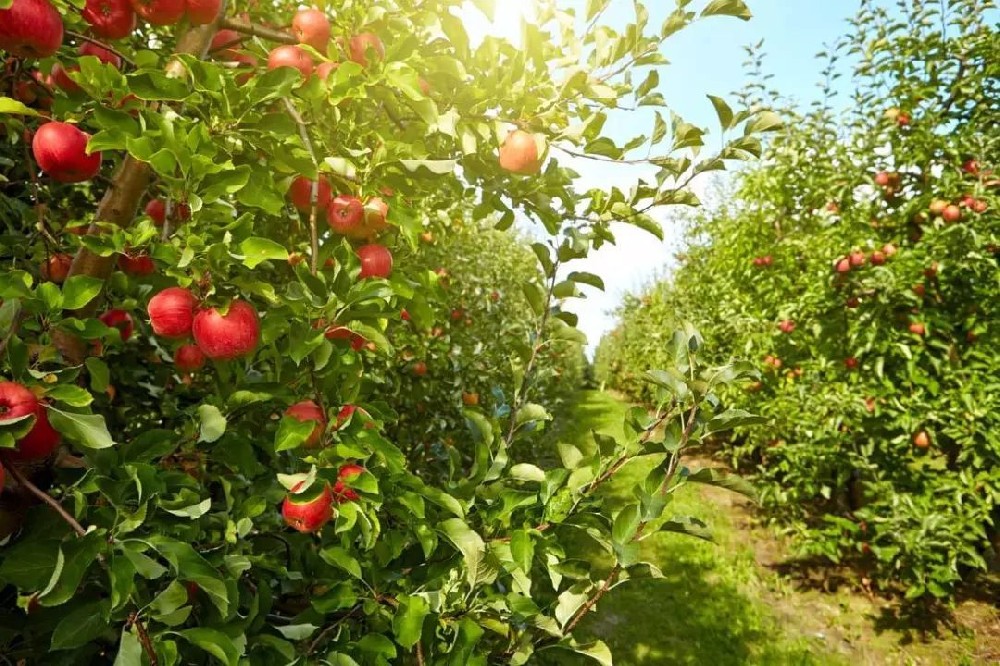

— Blogs —
—Products—
 Consumer hotline +8618073152920
Consumer hotline +8618073152920 WhatsApp:+8615367865107
Address:Room 102, District D, Houhu Industrial Park, Yuelu District, Changsha City, Hunan Province, China
Product knowledge
Time:2023-10-03 17:09:48 Popularity:798
With the development of modern agriculture, orchard production is increasingly focusing on the monitoring and management of the meteorological environment. Poor meteorological conditions will not only lead to fruit tree damage, affecting yield and quality, but also may cause irreversible damage to the orchard ecological environment. In order to grasp the meteorological changes in the orchard in a timely manner, the scientific development of defense strategies, small weather station has become a powerful assistant in orchard management.

Small weather stations can monitor and record several key agro-meteorological parameters in the orchard, such as soil temperature, relative humidity, light intensity, carbon dioxide concentration, wind speed and direction, and rainfall. By collecting these data in real time, managers can accurately understand the trends of the meteorological environment in the orchard and thus make reasonable management decisions.
First of all, the soil temperature monitoring function of the small weather station can help fruit farmers better grasp the growth of the root system of fruit trees. Different kinds of fruit trees have different requirements for soil temperature, if the temperature is too high or too low will affect the normal growth and development of fruit. Through real-time monitoring of soil temperature, fruit farmers can timely adjust irrigation and fertilization and other management measures to create a suitable growing environment.
Secondly, the monitoring of relative humidity is crucial to the control of orchard pests and diseases. A high humidity environment can easily lead to the growth and spread of fungal diseases, aphids and other pests. The relative humidity monitoring function of the small weather station can help fruit farmers understand the humidity situation in the orchard in time, so as to take corresponding control measures to reduce the occurrence of pests and diseases.
In addition, light intensity is one of the key factors for normal growth and photosynthesis of fruit trees. Insufficient or too strong light will affect the quality and yield of fruit. By monitoring the light intensity, the small weather station, the management personnel can reasonably arrange the fruit thinning, pruning and shading of fruit trees to provide good light conditions for the growth of fruit.
What's more, the monitoring of carbon dioxide concentration also has an important impact on the growth of fruit trees and fruit development. Low carbon dioxide concentration in the orchard will limit the photosynthesis of fruit trees and affect the growth rate and quality of fruits. Small weather stations can monitor the carbon dioxide concentration in real time, and managers can adjust measures such as irrigation and ventilation according to the data to provide a suitable carbon dioxide concentration environment for fruit trees.
In addition, the monitoring of wind speed and direction is also very important for orchard wind resistance and pollen spread. High wind speeds may cause fruit to fall off or tree trunks to break, while different wind directions will have an impact on pollen dispersal. By monitoring wind speed and direction from small weather stations, fruit growers can take timely wind protection measures to avoid damage to their orchards caused by extreme weather and control the direction of pollen dispersal to increase the pollination rate of their fruits.
Finally, rainfall monitoring helps fruit farmers to organize irrigation and drainage work in a scientific and rational way. Too much rainfall may lead to fruit rot and root hypoxia, while too little rainfall may lead to water shortage in fruit trees. Through the monitoring of rainfall by small weather stations, fruit farmers can adjust irrigation and drainage strategies in time to maintain appropriate soil moisture.
In summary, small weather station plays an important monitoring role in orchard production. It can collect and record the key agro-meteorological parameters of the orchard in real time, help the orchard farmers to grasp the meteorological changes in the orchard in a timely manner, scientifically and reasonably formulate management strategies, and reduce the risk of meteorological disasters on the orchard production. Through the rational use of small weather station monitoring data, orchard managers can improve the ecological environment of the orchard's ability to resist, improve the quality and efficiency of orchard production. Let us give full play to the advantages of small weather station, help orchard management, promote the process of agricultural modernization, and contribute to the supply of high-quality fruit for the community.
Prev:Campus weather stations help popularize the science of general knowledge of weather in schools
Next:Weather station provides meteorological monitoring services for kiwifruit cultivation
Related recommendations
Sensors & Weather Stations Catalog
Agriculture Sensors and Weather Stations Catalog-NiuBoL.pdf
Weather Stations Catalog-NiuBoL.pdf
Related products
 Combined air temperature and relative humidity sensor
Combined air temperature and relative humidity sensor Soil Moisture Temperature sensor for irrigation
Soil Moisture Temperature sensor for irrigation Soil pH sensor RS485 soil Testing instrument soil ph meter for agriculture
Soil pH sensor RS485 soil Testing instrument soil ph meter for agriculture Wind Speed sensor Output Modbus/RS485/Analog/0-5V/4-20mA
Wind Speed sensor Output Modbus/RS485/Analog/0-5V/4-20mA Tipping bucket rain gauge for weather monitoring auto rainfall sensor RS485/Outdoor/stainless steel
Tipping bucket rain gauge for weather monitoring auto rainfall sensor RS485/Outdoor/stainless steel Pyranometer Solar Radiation Sensor 4-20mA/RS485
Pyranometer Solar Radiation Sensor 4-20mA/RS485
Screenshot, WhatsApp to identify the QR code
WhatsApp number:+8615367865107
(Click on WhatsApp to copy and add friends)